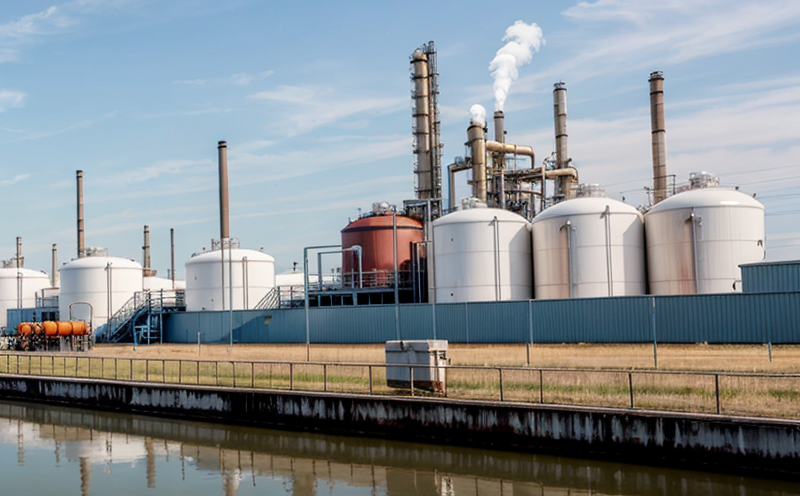DIN 53315 Safety Testing of Hazardous Substances in Plastics
The DIN 53315 safety testing standard is a crucial procedure mandated by German law for the assessment of hazardous substances within plastics. This regulation ensures that products comply with stringent environmental and health standards, particularly relevant to industries such as automotive, electronics, and consumer goods.
Plastics are widely used in industrial applications due to their versatility and durability. However, many plastic materials contain chemicals that can be harmful if not properly managed during production, use, or disposal. DIN 53315 addresses this by providing a comprehensive framework for identifying and quantifying potentially hazardous substances (HSCs), such as phthalates, Bisphenol A (BPA), and heavy metals.
The testing process involves several stages designed to ensure thorough evaluation of the plastic’s chemical profile. Initially, samples are prepared according to specified protocols outlined in DIN 53315. These protocols may vary depending on the type of plastic and its intended use. For instance, rigid plastics like polyvinyl chloride (PVC) or polystyrene typically undergo a different preparation process than flexible materials such as polyurethane.
Once prepared, samples are analyzed using various instrumental techniques aimed at detecting HSCs. Common methods include gas chromatography-mass spectrometry (GC-MS), high-performance liquid chromatography (HPLC), and Fourier-transform infrared spectroscopy (FTIR). These instruments allow for precise quantification of trace levels of hazardous compounds, ensuring accurate identification even when concentrations are extremely low.
The results from these analyses form the basis of compliance reports that detail whether the plastic meets the stringent requirements stipulated by DIN 53315. Compliance is essential not only for meeting legal obligations but also for protecting brand reputation and ensuring consumer safety. Failure to adhere can lead to product recalls, legal actions, and damage to company image.
Given its importance in industrial settings, compliance with DIN 53315 has become a critical aspect of quality management and R&D processes within many organizations. Quality managers rely on this testing to verify that new products meet safety standards before market release. Compliance officers ensure ongoing adherence through regular audits and updates. R&D engineers utilize the test results to modify formulations or develop safer alternatives where necessary.
For procurement teams, compliance with DIN 53315 serves as a benchmark for selecting suppliers who can provide materials that meet stringent quality criteria. This proactive approach helps mitigate risks associated with using potentially harmful substances in manufacturing processes.
Scope and Methodology
The scope of DIN 53315 encompasses the evaluation of hazardous substances present in various types of plastics used across different industries. It covers both monomers and additives that might migrate into contact with foodstuffs, beverages, or other consumer products.
The methodology involves several key steps aimed at ensuring accurate identification and quantification of HSCs:
- Sample preparation adhering to precise protocols
- Analytical methods such as GC-MS, HPLC, FTIR
- Data interpretation against specified limits set by DIN 53315
These steps ensure comprehensive coverage of all relevant compounds likely to pose risks. The standard also includes guidelines for handling and storing samples to maintain integrity throughout the testing process.
It's important to note that while DIN 53315 focuses primarily on plastics, its principles can be adapted for other polymer-based materials such as elastomers or composite fibers used in similar applications.
Environmental and Sustainability Contributions
DIN 53315 plays a vital role in promoting sustainable practices within the plastics industry by fostering responsible use of hazardous substances. By ensuring that only safe materials enter production cycles, it reduces environmental pollution risks associated with improper disposal or recycling.
The standard encourages manufacturers to explore alternative formulations containing fewer HSCs, thereby reducing overall toxicity levels over time. This shift towards greener practices aligns well with broader sustainability goals pursued by many organizations today.
Moreover, compliance with DIN 53315 can contribute positively to corporate social responsibility initiatives aimed at enhancing public trust and confidence in brands committed to ethical manufacturing processes. Consumers increasingly demand transparency regarding product safety measures taken during development stages.
Use Cases and Application Examples
DIN 53315 finds application across multiple sectors where plastic components come into direct contact with end users or food products. Notably, this includes automotive interiors, packaging materials for pharmaceuticals, electrical appliances, and kitchenware.
In the automotive sector, ensuring that interior trimmings do not release harmful chemicals when exposed to heat or moisture is paramount. DIN 53315 helps manufacturers verify that their designs comply with strict safety standards before market introduction.
For packaging materials, especially those used for foodstuffs, compliance ensures consumer protection against ingestion of potentially dangerous substances from packaging surfaces. Pharmaceutical companies also benefit by adhering to this standard when developing new drug delivery systems or containers.
The electrical appliances industry gains significant advantages through DIN 53315’s stringent testing protocols since many electronic components incorporate plastic elements that could otherwise pose hazards during usage.





